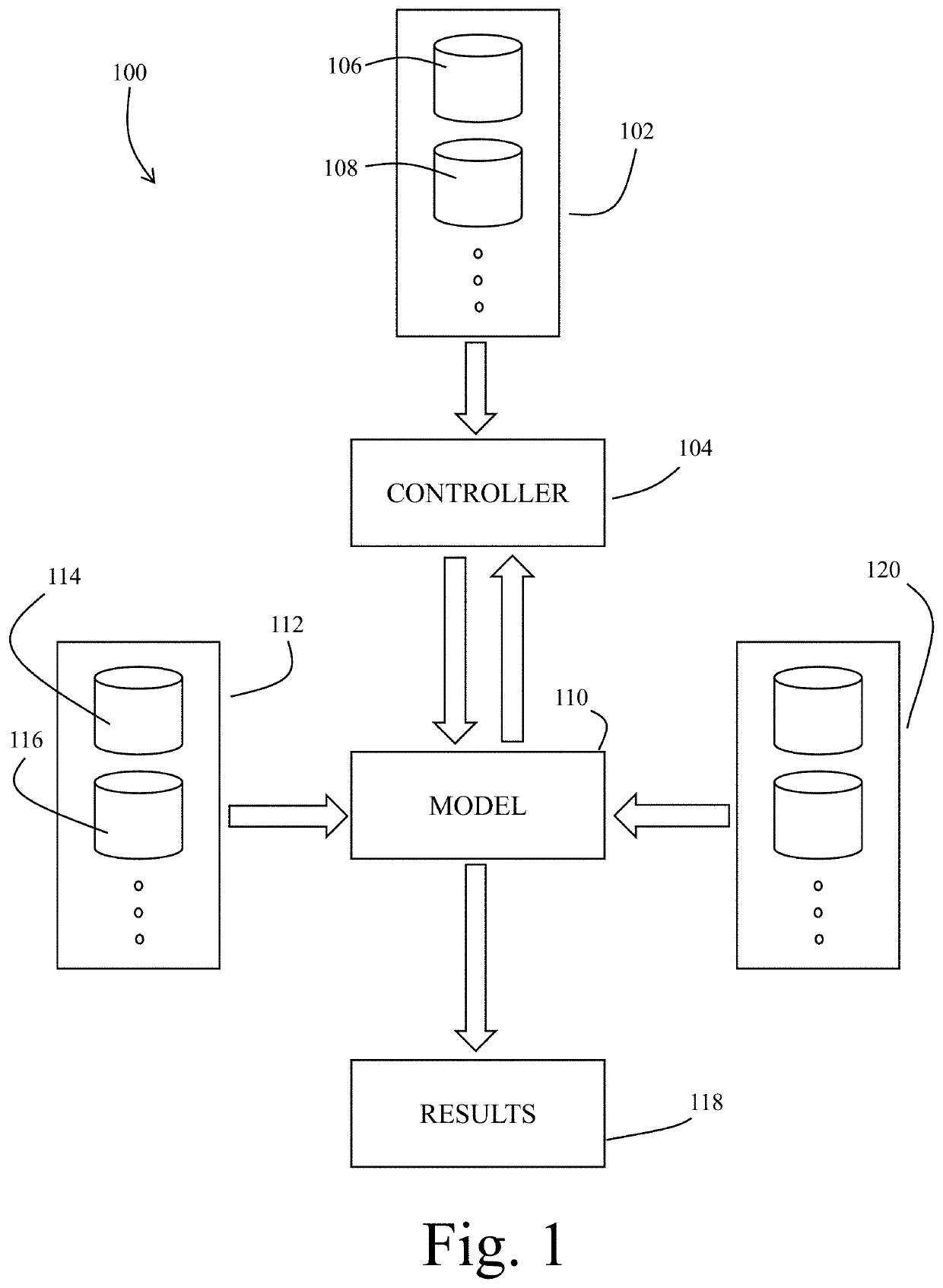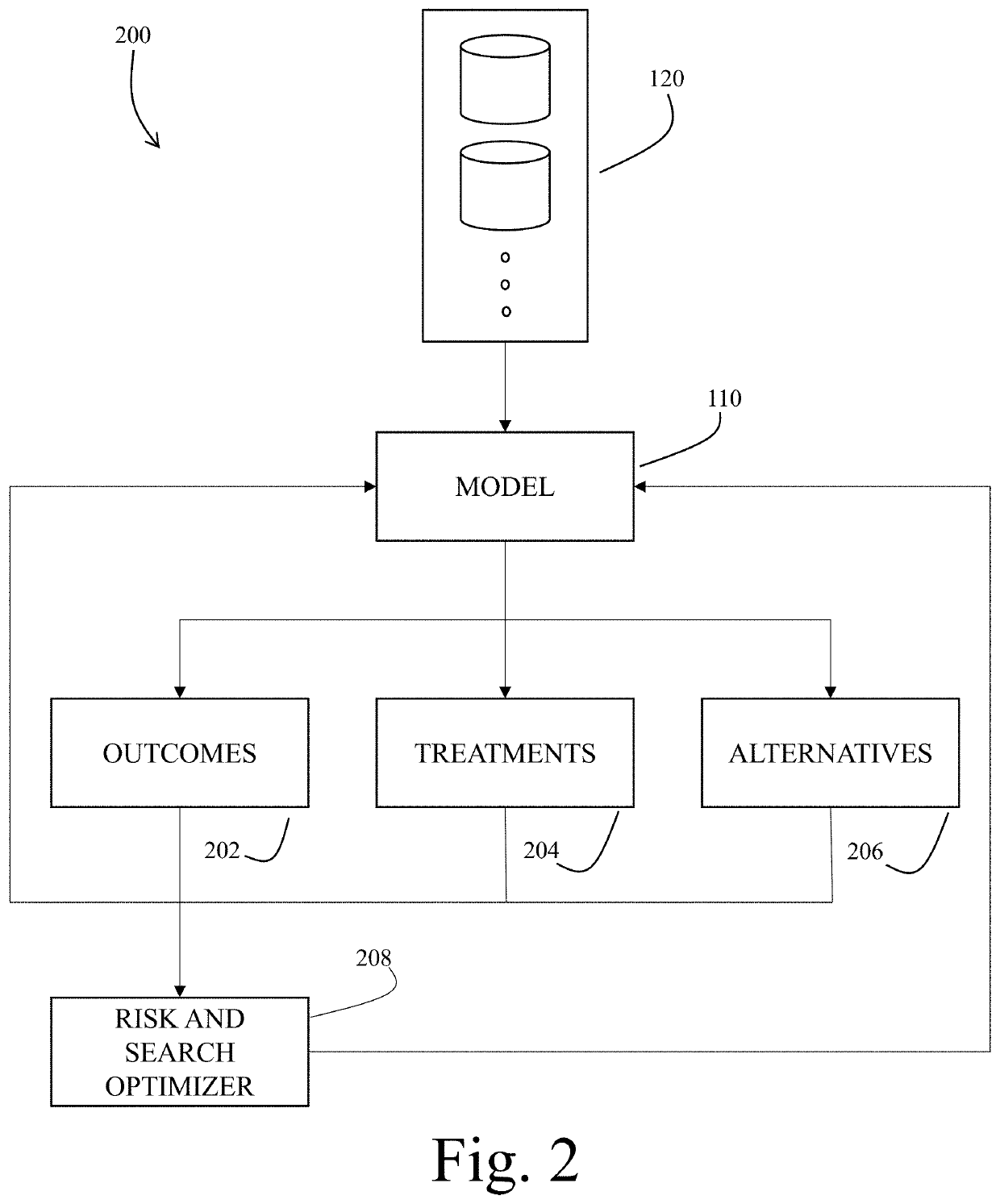Phenotypic patient data derivation from economic data
a technology for economic data and phenotype patients, applied in the field of prediction, categorizing and evaluation models, can solve the problems of difficult to obtain diagnostic data, difficult to use in large-scale analytical settings, and historically difficult to obtain medical data
- Summary
- Abstract
- Description
- Claims
- Application Information
AI Technical Summary
Benefits of technology
Problems solved by technology
Method used
Image
Examples
Embodiment Construction
[0027]Exemplary embodiments of the present invention are directed to systems and methods for modeling phenotypical patient data from economic data sources. In a preferred embodiment, the order history of an individual is used to identify patient phenotypes for use in several second order outputs. Economic data sets generally have been found that are readily accessible and represent actual diagnostic data as first order approximations. This method of modeling phenotypical patient data is advantageous particularly because of the numerous difficulties inherent in obtaining and working with diagnostic, medical history and other clinical data.
[0028]As used herein when referring to input data sets related to the invented system and methods, the terms “non-medical” and “economic” are used to generally describe the use of data that are not “health information” as set forth in the HIPAA Privacy Rule 42 CFR § 160.103, namely, information that “[r]elates to the past, present, or future physica...
PUM
 Login to View More
Login to View More Abstract
Description
Claims
Application Information
 Login to View More
Login to View More - R&D
- Intellectual Property
- Life Sciences
- Materials
- Tech Scout
- Unparalleled Data Quality
- Higher Quality Content
- 60% Fewer Hallucinations
Browse by: Latest US Patents, China's latest patents, Technical Efficacy Thesaurus, Application Domain, Technology Topic, Popular Technical Reports.
© 2025 PatSnap. All rights reserved.Legal|Privacy policy|Modern Slavery Act Transparency Statement|Sitemap|About US| Contact US: help@patsnap.com



